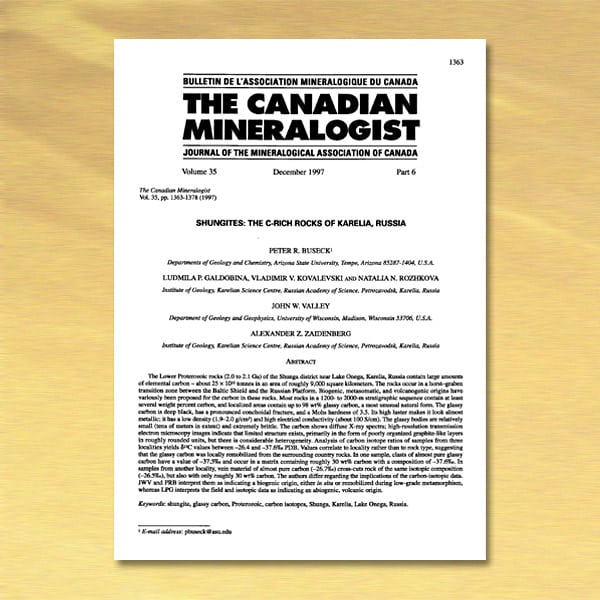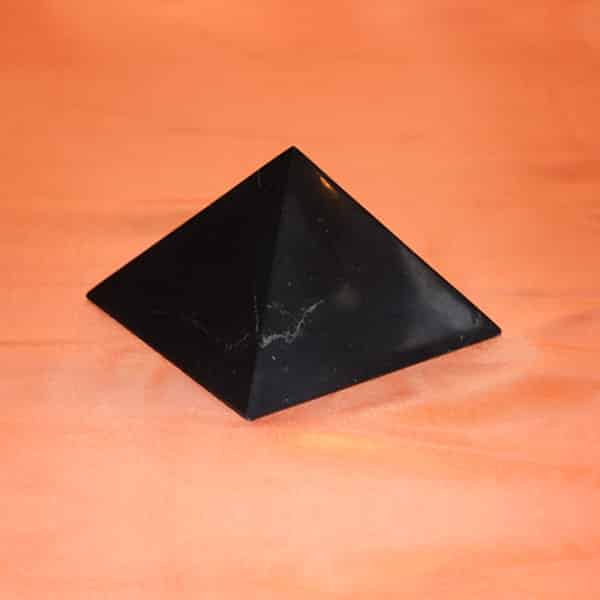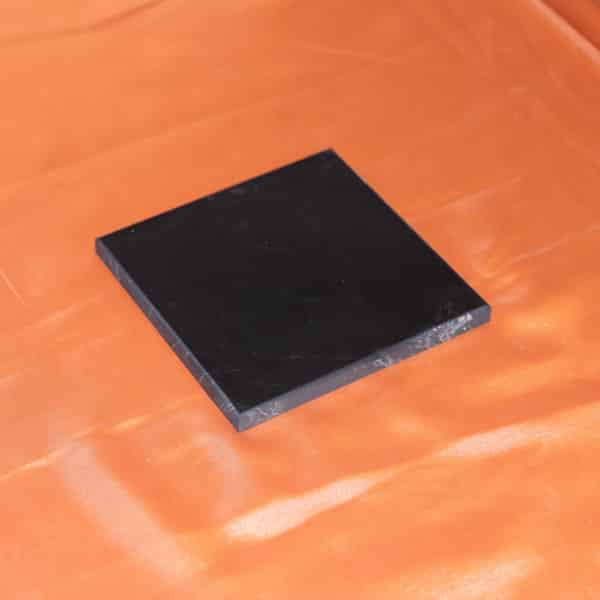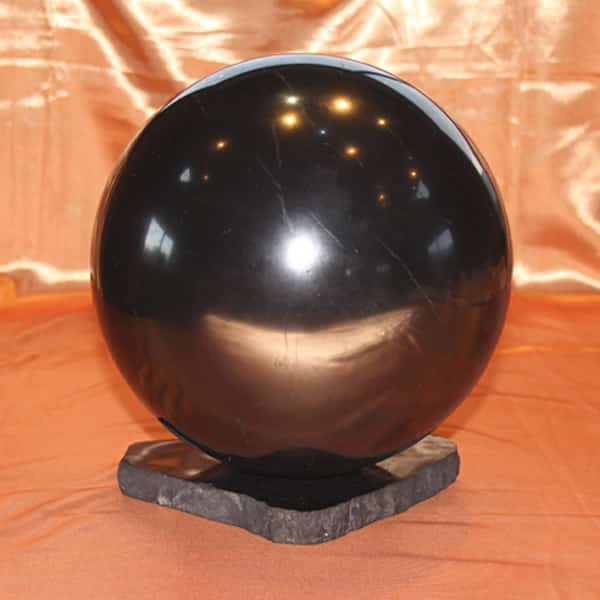Description
The Lower Proterozoic rocks (2.0 to 2.1 Ga) of the Shunga district near Lake Onega, Karelia, Russia contain large amounts of elemental carbon – about 25 x 1010 tonnes in an area of roughly 9,000 square kilometers. The rocks occur in a horst-graben transition zone between the Baltic Shield and the Russian Pladorm. Biogenic, metasomatic, and volcanogenic origins have variously been proposed for the carbon in these rocks. Most rocks in a 1200- to 2000-m stratigraphic sequence contain at least several weight percent carbon, and localized areas contain up to 98 wt% glassy carbon, a most unusual natural form. The glassy carbon is deep black, has a pronounced conchoidal fracture, and a Mohs hardness of 3.5. Its high luster makes it look almost metallic; it has a low density (1.9-2.0 g/cm3) and high electrical conductivity (about 100 S/cm). The glassy bodies are relatively small (tens of meters in extent) and extremely brittle. The carbon shows diffuse X-ray spectra; high-resolution transmission electron microscopy images indicate that limited stucture exists, primarily in the form of poorly organized graphite-like layers in roughly rounded units, but there is considerable heterogeneity. Analysis of carbon isotope ratios of samples from three localities yields δ13C values between -26.4 and -37.6‰ PDB. Values correlate to locality rather than to rock type, suggesting that the glassy carbon was locally remobilized from the surrounding country rocks. In one sample, clasts of almost pure glassy carbon have a value of -37.5‰ and occur in a matrix containing roughly 30 wt% carbon with a composition of -37.6‰. ln samples from another locality, vein material of almost pure carbon( -26.7‰) cross-cuts rock of the same isotopic composition (-26.5‰), but also with only roughly 30 wt% carbon. The authors differ regarding the implications of the carbon-isotopic data. JWV and PRB interpret them as indicating a biogenic origin, either in situ or remobilized during low-grade metamorphism, whereas LPG interprets the field and isotopic data as indicating an abiogenic, volcanic origin.







Avis
Il n’y a pas encore d’avis.